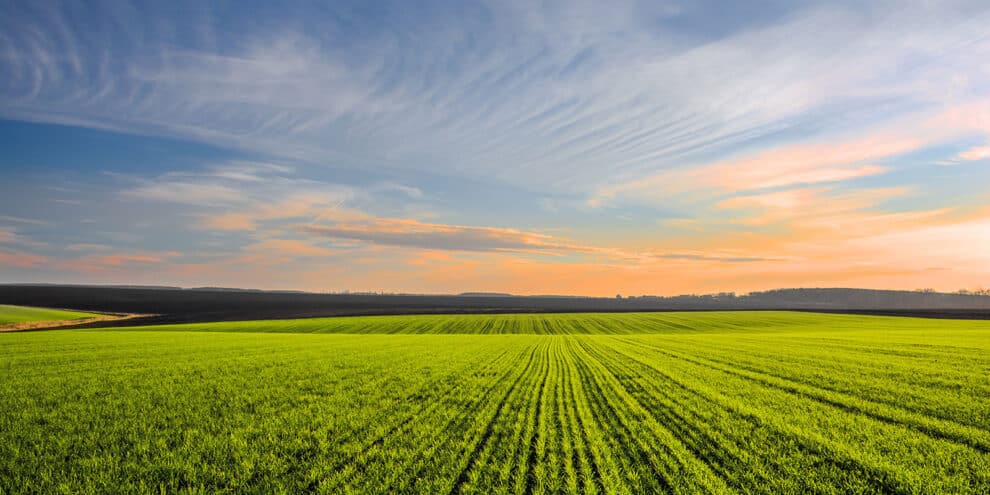The year 2023 brought immense challenges for startup funding for agricultural companies. High interest rates made speculative investments less attractive and provided risk-free alternatives for investors who might normally allocate into the space. Banks significantly tightened their lending and credit standards. Early stage companies struggled with runway and raising bridge rounds. Though economic headwinds remain, we’re optimistic that 2024 will see an uptick in funding for several areas.
Here are some of the trends we’re watching that could make an impact in the ag investing space this year:
Expansion of the CEA Industry
2023 was a turbulent year for Controlled Environment Agriculture (CEA). Large, well-funded players, including AeroFarms and AppHarvest, filed for bankruptcy reorganization, while many other indoor farms, both large and small, closed their growing operations for good. Capital intensive hydroponic farms and greenhouses had major challenges raising money. As companies with unsustainable business models fall out, survivors will increasingly focus on unit economics and generating positive cash flow. Additionally, those indoor growers with strong distribution or off-take agreements in place will prosper compared to growers who are selling on a more ad hoc basis. Projected Federal Reserve interest rate cuts in 2024 will help jump start equipment and project financing in the CEA space.
Rapid Growth of Artificial Intelligence (AI) in Ag
AI’s share of the funding pie shifted dramatically in 2023. Artificial intelligence companies were one of the stand-outs in venture capital funding and that trend will likely extend into ag-tech funding throughout 2024. AI can be used to analyze large amounts of data collected from farms and provide insights that can help farmers make data-driven decisions. AI-powered systems can predict weather patterns, soil moisture levels, and pest infestations, enabling farmers to take preventive measures and optimize crop yields. We’re witnessing both small and large ag companies adopt and deploy AI technologies in their business, embracing the efficiencies that AI brings into supporting business functions, such as customer service and marketing. Others, like our portfolio company Precision Livestock Technologies, incorporate AI as a core part of their product.
Agricultural Biotechnology Market is Surging
Biotechnology and the use of so-called “biologicals” are widely used in agriculture to improve plant growth and yields, increase resistance to pests and diseases, and help farmers use less water. Biotechnology has the potential to play a significant role in developing nutritionally improved food crops that can also withstand extreme weather conditions. Large corporations, such as Bayer and Syngenta, will continue to build their biologics portfolios via R&D, strategic investments, and acquisitions, while promising biological-focused start-ups will jockey for early stage funding rounds this year.
Functional Foods Are Reinventing Wellness
Functional foods are those that offer health benefits that extend beyond their basic nutritional value. Recent studies have revealed that wild-growing and cultivated mushrooms, certain fruits and vegetables, and various seeds have immense potential to be regarded as functional foods, and consumers have jumped on the trend. According to Fortune Business Insights, the global functional food and beverage market is projected to grow from $281.14 billion in 2021 to $529.66 billion in 2028 at a CAGR of 9.5%. An increasing focus on gut health is helping reverse the downward trend in milk consumption with new demand for prebiotic and probiotic dairy products, along with generating demand for other fermented foods.
Regenerative Agriculture is Taking Hold
Though often overshadowed by a narrow focus on climate, regenerative agriculture involves farming practices that promote soil health, biodiversity, and ecosystem services. This approach focuses on building soil organic matter, reducing tillage, and using cover crops to improve soil health and reduce erosion. Regenerative agriculture also helps farmers reduce their use of fertilizers and pesticides, leading to cost savings and environmental benefits. On the livestock side, holistic, intensive, or “mob” grazing replicates the interaction between the land and native ruminant animals to build grasses deep roots that retain water and carbon.
Major brands embracing regenerative agriculture practices include General Mills, Patagonia, and Stonyfield Organic. Farmers, ranchers, and the agricultural investors who fund them will increasingly be called to respond to the public’s demand for production methods that enhance, rather than detract from the environment.
This content may not be used or reproduced in any manner whatsoever, in part or in whole, without written permission of LANDTHINK. Use of this content without permission is a violation of federal copyright law. The articles, posts, comments, opinions and information provided by LANDTHINK are for informational and research purposes only and DOES NOT substitute or coincide with the advice of an attorney, accountant, real estate broker or any other licensed real estate professional. LANDTHINK strongly advises visitors and readers to seek their own professional guidance and advice related to buying, investing in or selling real estate.










What were the primary financial challenges faced by large CEA players like AeroFarms and AppHarvest in 2023?